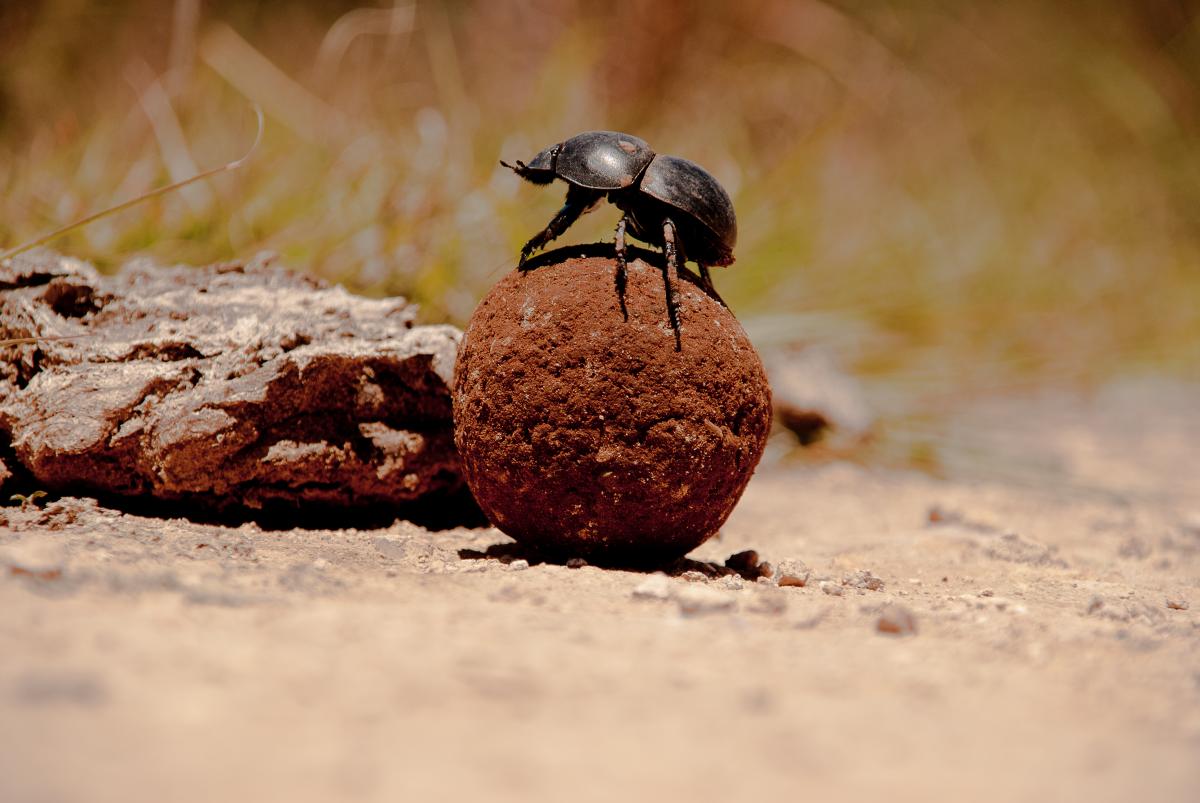 Ever been at a loss to articulate exactly why certain creationist or intelligent design arguments are, well, wrong? Or been afraid to bring up the topic of climate change because you’re not quite sure all your friends are on board? You’ll find some help on both fronts here today. Also, a stunning visualization of Earth’s climbing temperatures and some stories that demonstrate that climate change isn’t a vague future possibility but is already happening. But it’s not all bad news; nature continues to be unrelentingly cool. Witness the humble dung beetle. Also, while the Creation "Museum" is wrong about humans and dinosaurs co-existing, at least we overlapped with mastodons—in Florida!.
Ever been at a loss to articulate exactly why certain creationist or intelligent design arguments are, well, wrong? Or been afraid to bring up the topic of climate change because you’re not quite sure all your friends are on board? You’ll find some help on both fronts here today. Also, a stunning visualization of Earth’s climbing temperatures and some stories that demonstrate that climate change isn’t a vague future possibility but is already happening. But it’s not all bad news; nature continues to be unrelentingly cool. Witness the humble dung beetle. Also, while the Creation "Museum" is wrong about humans and dinosaurs co-existing, at least we overlapped with mastodons—in Florida!.
- A Devastating Critique of Population Genetics? The Discovery Institute Thinks So, The Panda's Thumb, May 4, 2016 — In the sledgehammer-to-swat-a-fly department, the distinguished biologist Joe Felsenstein—member of the National Academy of Sciences and recipient of the Darwin-Wallace medal from the Linnean Society of London—takes on a Discovery Institute blogger’s woefully uninformed critique of natural selection.
- One of the Most Convincing Climate Change Visualizations We’ve Ever Seen, Gizmodo, May 10, 2016 — Are you easily mesmerized by spirals and bright colors? I sure am. This climate change visualization is both captivating and highly informative.
- Five Pacific Islands Lost to Rising Sea Levels, Time, May 10, 2016 — Five of the Solomon Islands have now disappeared into the sea. These islands were uninhabited, but six others have also lost significant area, and villages have been displaced. While multiple factors are involved in the sea level rise affecting these islands, climate change is certainly among those implicated.
- Ken Ham Really Doesn’t Understand Science, Bad Astronomy, May 12, 2016 — Phil Plait rebuts a series of tweets from Answers in Genesis’s Ken Ham “that are not just wrong, but completely wrong, again demonstrating not just a misunderstanding of the topic, but a deep—I daresay fundamental—lack of understanding of even the most basic facts about the science he’s trying to deny.”
- The Humble Dung Beetle Is a Master of Celestial Navigation, Washington Post, Speaking of Science, May 12, 2016 — Rachel Feltman relays conclusions drawn from a new study on dung beetles—it turns out they’re stargazers—but not just any stargazers, they are stargazers with a purpose. Proving yet again that we are foolish for ever thinking we’re the smartest/most advanced/most awesome organisms out there, dung beetles can stand atop their poopy prize and take a snapshot of their celestial surroundings, using it to navigate. Can we do that? Not without instruments or an iPhone app. Color me humbled.
- Climate Change and the Case of the Shrinking Red Knots, The New York Times, May 12, 2016 — The always excellent Carl Zimmer shares “a small but telling parable of the perils of climate change” involving the effects of global warming on the migration of red knots, shorebirds that fly almost ten thousand miles between the Arctic and West Africa.
- The Vicious Cycle that Makes People Afraid to Talk about Climate Change, Washington Post, May 12, 2016 — Chris Mooney describes a new study finding “people are often afraid to talk about climate change with their peers because they wrongly think those peers are more doubtful about climate change than they actually are.”
- Humans and Mastodons Coexisted in Florida, New Evidence Shows, The New York Times, May 13, 2016 — If humans and mastodons coexisted...that only means one thing: mastodon rides down Miami Beach. But seriously, this is cool.
Photo credit: Andi Gentsch on Flickr

